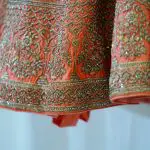Looking for the best fabric to keep you warm this winter? Look no further than insulating wool!
In this article, we’ll explore why wool is the ultimate winter fabric and how it keeps you cozy in cold weather.
We’ll also share styling tips for your wool winter clothing and give you advice on caring for your garments.
Stay warm and stylish all season long with insulating wool!
Table of Contents
The Benefits of Insulating Wool
Stay warm and cozy this winter with the benefits of insulating wool. When it comes to staying warm in cold weather, wool outperforms synthetic materials in terms of insulation. Wool fibers have natural crimps and scales that trap air, creating tiny pockets of insulation that help to regulate body temperature. This means that even in freezing conditions, wool clothing will keep you warm and comfortable.
Not only is wool highly effective at retaining heat, but it also has sustainable and eco-friendly aspects. Wool is a renewable resource, as it comes from sheep that naturally produce it every year. Unlike synthetic materials, wool is biodegradable and doesn’t contribute to pollution when it eventually breaks down. Additionally, wool production requires less energy and water compared to the production of synthetic fibers, making it a more environmentally friendly choice.
In conclusion, when it comes to insulating properties, wool is superior to synthetic materials. Its natural ability to trap air and regulate body temperature makes it an ideal choice for winter clothing. Furthermore, the sustainable and eco-friendly aspects of wool make it a responsible choice for those who care about the environment.
Stay warm and make a conscious choice by opting for insulating wool this winter.
Why Wool Is the Ultimate Winter Fabric
Experience the ultimate warmth and comfort this winter with wool, the ultimate winter fabric. Wool is unmatched when it comes to providing insulation and keeping you cozy during the colder months. One of the reasons why wool is the ultimate winter fabric is its excellent layering options. Wool garments can be easily layered, allowing you to adjust your clothing according to the temperature and your activity level. Whether you’re wearing a wool sweater over a shirt or adding a wool scarf to your outfit, you can easily adapt to changing weather conditions while staying warm.
While there are alternatives to wool, none can truly match its insulating properties. Synthetic materials like polyester and nylon may offer some level of warmth, but they often lack breathability and can cause discomfort when worn for extended periods. Natural alternatives like cotton and silk also fall short in comparison to wool, as they lack the same level of insulation.
In addition to its superior insulation, wool also has the ability to wick away moisture, keeping you dry and comfortable. This makes it an ideal choice for winter activities such as skiing or snowboarding, where staying warm and dry is essential.
When it comes to staying warm and comfortable during winter, wool is the ultimate fabric. Its layering options and unmatched insulation make it a top choice for those seeking warmth and comfort in colder temperatures. So, embrace the wool and enjoy the ultimate winter experience.
How Wool Keeps You Warm in Cold Weather
To understand how wool keeps you warm in cold weather, let’s delve into its unique insulating properties. Here are four key factors that contribute to wool’s ability to keep you cozy in chilly temperatures:
-
Natural insulation: Wool is a natural insulator that traps air between its fibers. This trapped air creates a layer of insulation that helps to regulate your body temperature and keep you warm.
-
Moisture-wicking: Wool has the ability to wick away moisture from your skin, keeping you dry and preventing the chilling effect of dampness. This is particularly important in cold weather, as wet skin can lead to a significant loss of body heat.
-
Breathability: Unlike synthetic materials, wool is breathable, allowing air to circulate and preventing overheating. This breathability helps to maintain a comfortable body temperature, even when you’re engaged in physical activities in the cold.
-
Benefits of layering wool for added warmth: Layering wool garments is an effective way to maximize insulation. By wearing multiple layers of wool, you create additional pockets of trapped air, enhancing the overall warmth and comfort.
When choosing wool garments for cold weather, look for pieces made from high-quality, tightly woven wool. Opt for thicker, heavier wool fabrics for maximum insulation. Additionally, consider the fit and style of the garment to ensure it provides ample coverage and protection against the cold.
With the right wool clothing, you can stay warm and cozy throughout the winter season.
Styling Tips for Wool Winter Clothing
When it comes to styling wool winter clothing, you can enhance the warmth and comfort provided by this insulating fabric by following these tips. First, consider the latest winter clothing trends. This season, oversized and chunky knit sweaters are all the rage, so opt for a cozy wool sweater in a trendy color like mustard yellow or forest green. Pair it with high-waisted jeans and ankle boots for a stylish and effortless look.
Another way to maximize the warmth of your wool clothing is by layering. Wool is a great fabric for layering because it is breathable and can help regulate your body temperature. Start with a lightweight wool base layer, such as a long-sleeve top or leggings, and then add a wool sweater or cardigan on top. Finish off your look with a wool coat or jacket for added insulation.
To give you a clearer picture, here is a table summarizing the styling tips for wool winter clothing:
| Tip | Description |
|---|---|
| Follow Winter Clothing Trends | Opt for oversized and chunky knit sweaters in trendy colors. |
| Layering with Wool | Start with a lightweight wool base layer and add a wool sweater or cardigan. Finish with a wool coat or jacket. |
| Accessorize with Wool | Add wool accessories like scarves, beanies, and gloves to keep you warm and stylish. |
| Experiment with Textures | Mix different textures of wool, such as cable knit and ribbed, for added visual interest. |
Caring for Your Wool Winter Garments
To properly care for your wool winter garments, it’s important to follow these steps:
-
Read the care label: Before doing anything, check the care label on your wool garment. It will provide specific instructions on how to clean and maintain the item.
-
Hand wash or dry clean: Wool is a delicate fabric that can easily shrink if not cared for properly. To prevent wool shrinkage, it’s best to either hand wash your garments using a gentle detergent or take them to a professional dry cleaner.
-
Use cold water: When washing wool, always opt for cold water. Hot water can cause the fibers to shrink and lose their shape. Soak the garment for a few minutes and then gently agitate it to remove any dirt or stains.
-
Lay flat to dry: After washing, never wring or twist your wool garments. Instead, gently squeeze out excess water and lay them flat on a clean towel to dry. This will help maintain their shape and prevent stretching.
By following these simple steps, you can ensure that your wool winter garments stay in great condition for many seasons to come.
Proper wool maintenance and preventing wool shrinkage will keep your clothes looking and feeling their best.
Frequently Asked Questions
How Does Wool Compare to Other Fabrics in Terms of Insulation?
Wool is more effective in keeping you warm compared to synthetic fabrics. It has natural insulating properties that help trap heat. Additionally, wool has a lower environmental impact compared to other fabrics due to its biodegradability and sustainable production methods.
Are There Any Specific Types of Wool That Are Better for Winter Clothing?
When it comes to winter clothing, there are different types of wool that work better. The benefits of wool for winter wear include excellent insulation, keeping you warm and cozy in chilly temperatures.
Can Wool Clothing Be Worn in Wet or Snowy Conditions?
Yes, you can wear wool clothing in wet or snowy conditions. However, it’s important to take care of your wool garments by avoiding excessive moisture and drying them properly to prevent damage.
Does Wool Have Any Specific Benefits for People With Sensitive Skin or Allergies?
Wool has specific benefits for people with sensitive skin or allergies. It is hypoallergenic and naturally regulates body temperature, reducing irritation. Additionally, wool is a sustainable and eco-friendly fabric option, making it a great choice for those with skin sensitivities.
Can Wool Clothing Be Machine Washed, or Is Dry Cleaning the Only Option?
Yes, wool clothing can be machine washed, but it’s best to follow the care instructions. Dry cleaning is another option, which can help maintain the benefits of wool, like its insulation and durability.
- How Does Ring Spun Cotton Affect Garment Fit and Shape Retention? - August 13, 2024
- What Are the Challenges in Producing Ring Spun Cotton? - August 13, 2024
- Is Ring Spun Cotton Suitable for Plus-Size Clothing? - August 13, 2024





